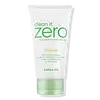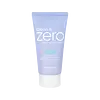What's inside
What's inside
 Key Ingredients
Key Ingredients

 Benefits
Benefits

 Concerns
Concerns

 Ingredients Side-by-side
Ingredients Side-by-side

Water
Skin ConditioningGlycerin
HumectantSodium Cocoyl Isethionate
CleansingGlyceryl Stearate
EmollientCetearyl Alcohol
EmollientCoconut Acid
CleansingPropanediol
SolventCocamidopropyl Betaine
CleansingStearic Acid
CleansingCI 77004
Cosmetic ColorantSodium Isethionate
CleansingHydroxypropyl Starch Phosphate
Sodium Methyl Cocoyl Taurate
CleansingPalmitic Acid
EmollientSalicylic Acid
MaskingMelaleuca Alternifolia Leaf Oil
AntioxidantSodium Chloride
MaskingSorbitol
HumectantCaprylyl Glycol
EmollientButylene Glycol
HumectantMagnesium Aluminum Silicate
Absorbent1,2-Hexanediol
Skin ConditioningEthylhexylglycerin
Skin ConditioningDisodium EDTA
Melia Azadirachta Leaf Extract
Skin ConditioningArachidic Acid
CleansingCapryloyl Salicylic Acid
ExfoliatingMica
Cosmetic ColorantMelia Azadirachta Flower Extract
Skin ConditioningMyristic Acid
CleansingOleic Acid
EmollientSodium Lactate
BufferingVolcanic Ash
AbrasiveCitric Acid
BufferingSodium PCA
HumectantMontmorillonite
AbsorbentMalic Acid
BufferingLactic Acid
BufferingGlycolic Acid
BufferingPyruvic Acid
MaskingMelaleuca Alternifolia Leaf Extract
PerfumingTartaric Acid
BufferingWater, Glycerin, Sodium Cocoyl Isethionate, Glyceryl Stearate, Cetearyl Alcohol, Coconut Acid, Propanediol, Cocamidopropyl Betaine, Stearic Acid, CI 77004, Sodium Isethionate, Hydroxypropyl Starch Phosphate, Sodium Methyl Cocoyl Taurate, Palmitic Acid, Salicylic Acid, Melaleuca Alternifolia Leaf Oil, Sodium Chloride, Sorbitol, Caprylyl Glycol, Butylene Glycol, Magnesium Aluminum Silicate, 1,2-Hexanediol, Ethylhexylglycerin, Disodium EDTA, Melia Azadirachta Leaf Extract, Arachidic Acid, Capryloyl Salicylic Acid, Mica, Melia Azadirachta Flower Extract, Myristic Acid, Oleic Acid, Sodium Lactate, Volcanic Ash, Citric Acid, Sodium PCA, Montmorillonite, Malic Acid, Lactic Acid, Glycolic Acid, Pyruvic Acid, Melaleuca Alternifolia Leaf Extract, Tartaric Acid
Water
Skin ConditioningSodium Cocoyl Isethionate
CleansingGlycerin
HumectantButylene Glycol
Humectant1,2-Hexanediol
Skin ConditioningPolyglyceryl-4 Caprate
EmulsifyingCoco-Betaine
CleansingOlea Europaea Fruit Oil
MaskingHydroxyethylcellulose
Emulsion StabilisingSodium Chloride
MaskingEthylhexylglycerin
Skin ConditioningBetaine
HumectantSodium Nitrate
SoothingEucalyptus Globulus Leaf Oil
PerfumingCitrus Aurantium Bergamia Fruit Oil
MaskingFerula Galbaniflua Resin Oil
AntimicrobialAnthemis Nobilis Flower Oil
MaskingRosmarinus Officinalis Leaf Oil
MaskingCentella Asiatica Extract
CleansingDisodium Phosphate
BufferingPolysorbate 60
EmulsifyingSimmondsia Chinensis Seed Oil
EmollientSodium Phosphate
BufferingAsiaticoside
AntioxidantCentella Asiatica Root Extract
Skin ConditioningCentella Asiatica Leaf Extract
Skin ConditioningCentella Asiatica Flower/Leaf/Stem Extract
Skin ConditioningBifida Ferment Lysate
Skin ConditioningArginine
MaskingLactobacillus Ferment
Skin ConditioningVaccinium Angustifolium Fruit Extract
Skin ProtectingMadecassic Acid
Skin ConditioningAsiatic Acid
Skin ConditioningMadecassoside
AntioxidantWater, Sodium Cocoyl Isethionate, Glycerin, Butylene Glycol, 1,2-Hexanediol, Polyglyceryl-4 Caprate, Coco-Betaine, Olea Europaea Fruit Oil, Hydroxyethylcellulose, Sodium Chloride, Ethylhexylglycerin, Betaine, Sodium Nitrate, Eucalyptus Globulus Leaf Oil, Citrus Aurantium Bergamia Fruit Oil, Ferula Galbaniflua Resin Oil, Anthemis Nobilis Flower Oil, Rosmarinus Officinalis Leaf Oil, Centella Asiatica Extract, Disodium Phosphate, Polysorbate 60, Simmondsia Chinensis Seed Oil, Sodium Phosphate, Asiaticoside, Centella Asiatica Root Extract, Centella Asiatica Leaf Extract, Centella Asiatica Flower/Leaf/Stem Extract, Bifida Ferment Lysate, Arginine, Lactobacillus Ferment, Vaccinium Angustifolium Fruit Extract, Madecassic Acid, Asiatic Acid, Madecassoside
 Reviews
Reviews

Ingredients Explained
These ingredients are found in both products.
Ingredients higher up in an ingredient list are typically present in a larger amount.
1,2-Hexanediol is a synthetic liquid and another multi-functional powerhouse.
It is a:
- Humectant, drawing moisture into the skin
- Emollient, helping to soften skin
- Solvent, dispersing and stabilizing formulas
- Preservative booster, enhancing the antimicrobial activity of other preservatives
Butylene Glycol (or BG) is used within cosmetic products for a few different reasons:
Overall, Butylene Glycol is a safe and well-rounded ingredient that works well with other ingredients.
Though this ingredient works well with most skin types, some people with sensitive skin may experience a reaction such as allergic rashes, closed comedones, or itchiness.
Learn more about Butylene GlycolEthylhexylglycerin (we can't pronounce this either) is commonly used as a preservative and skin softener. It is derived from glyceryl.
You might see Ethylhexylglycerin often paired with other preservatives such as phenoxyethanol. Ethylhexylglycerin has been found to increase the effectiveness of these other preservatives.
Glycerin is already naturally found in your skin. It helps moisturize and protect your skin.
A study from 2016 found glycerin to be more effective as a humectant than AHAs and hyaluronic acid.
As a humectant, it helps the skin stay hydrated by pulling moisture to your skin. The low molecular weight of glycerin allows it to pull moisture into the deeper layers of your skin.
Hydrated skin improves your skin barrier; Your skin barrier helps protect against irritants and bacteria.
Glycerin has also been found to have antimicrobial and antiviral properties. Due to these properties, glycerin is often used in wound and burn treatments.
In cosmetics, glycerin is usually derived from plants such as soybean or palm. However, it can also be sourced from animals, such as tallow or animal fat.
This ingredient is organic, colorless, odorless, and non-toxic.
Glycerin is the name for this ingredient in American English. British English uses Glycerol/Glycerine.
Learn more about GlycerinChances are, you eat sodium chloride every day. Sodium Chloride is also known as table salt.
This ingredient has many purposes in skincare: thickener, emulsifier, and exfoliator.
You'll most likely find this ingredient in cleansers where it is used to create a gel-like texture. As an emulsifier, it also prevents ingredients from separating.
There is much debate on whether this ingredient is comedogenic. The short answer - comedogenic ratings don't tell the whole story. Learn more about comegodenic ratings here.
The concensus about this ingredient causing acne seems to be divided. Research is needed to understand if this ingredient does cause acne.
Scrubs may use salt as the primary exfoliating ingredient.
Learn more about Sodium ChlorideSodium cocoyl isethionate is a natural ingredient from coconut oil. It is an ultra gentle cleanser that gives a nice foam without drying the skin or impacting the skin barrier.
The amount of foam created depends on the amount of sodium cocoyl isethionate used in the product.
This ingredient also helps improve the spreadability of a product.
Learn more about Sodium Cocoyl IsethionateWater. It's the most common cosmetic ingredient of all. You'll usually see it at the top of ingredient lists, meaning that it makes up the largest part of the product.
So why is it so popular? Water most often acts as a solvent - this means that it helps dissolve other ingredients into the formulation.
You'll also recognize water as that liquid we all need to stay alive. If you see this, drink a glass of water. Stay hydrated!
Learn more about Water